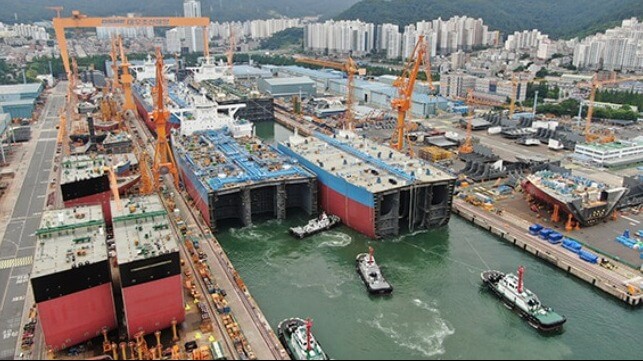DSME and POSCO to Develop New Steel for Ammonia and Hydrogen Shipping

South Korean shipbuilder Daewoo Shipbuilding & Marine Engineering and the leading domestic steel company POSCO are forming a new partnership to develop materials to meet the requirements for shipping materials such as liquified carbon dioxide or cryogenic liquified hydrogen. Jointly they look to strengthen South Korea’s competitive position for the future of eco-friendly shipping.
CEO Vice Chairman Kim Hak-dong of DSME announced the new business agreement during a ceremony to “establish a cooperative system for the development and application of new materials for shipbuilding,” which will build on the 20-year cooperation between the companies.
“We will accelerate the development of new materials and research on welding technology through a business agreement with POSCO,” explained Daewoo Shipbuilding & Marine Engineering Research Director Choi Dong-gyu.
The two companies plan to accelerate the development of new materials that can be applied to future ships and the development of welding technology suitable to the materials and the requirements of shipping future materials.
"We are preparing to develop new materials such as special steel that can withstand high pressure and low temperature to transport liquefied carbon dioxide and high manganese steel to store and transport cryogenic liquefied hydrogen at minus 253?,” the companies said in announcing the new collaboration. Among the specific efforts they identified are ammonia fuel tank development and welding technology research for ammonia-fueled ships.
During their previous collaborations, the companies developed a high manganese steel fuel tank for cryogenic LNG transported at minus 163?. They successfully developed ultra-thick TMCP steel with a thickness of 80 to 100mm that can withstand the loading weight of an ultra-large containership and LPG/ammonia at minus 55?. There are also new materials and advanced welding technology for the development of the shipbuilding industry, such as low-temperature steel for cargo holds that can be transported and ARC-7 Yamal icebreaking LNG YP500 steel for polar region operations.
The companies report that the high manganese steel tanks have a lower price than conventional materials, and high strength and wear resistance as well as a good performance at cryogenic temperatures. The first installation was completed in June 2022 with deck-mounted IMO Type-C LNG fuel tanks on a very large crude oil carrier (VLCC). A second VLCC has also been fitted with the new tank design and recently the first square Type-B LNG tank made of high manganese steel was installed on a new ultra-large containership under construction for Hapag-Lloyd.
